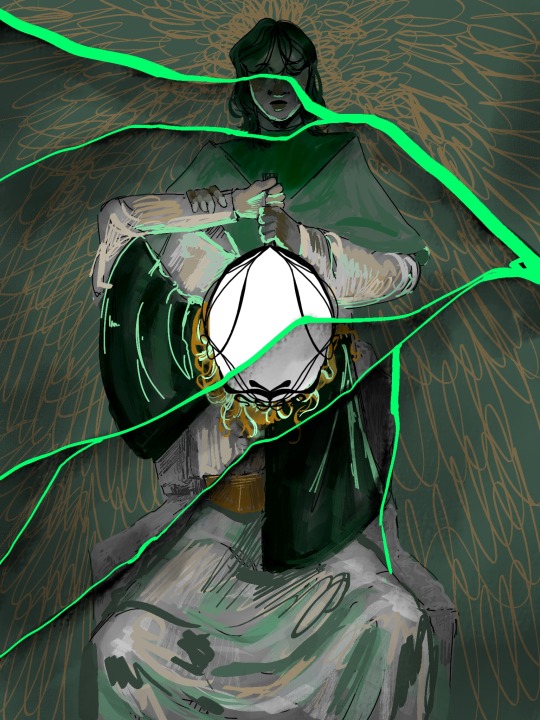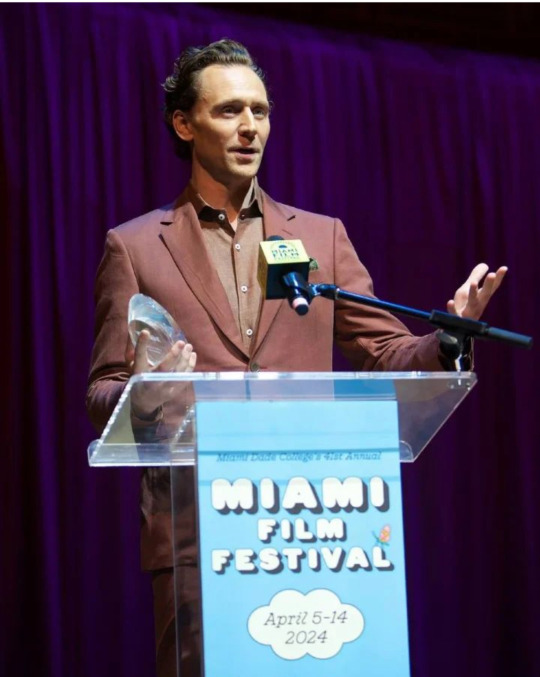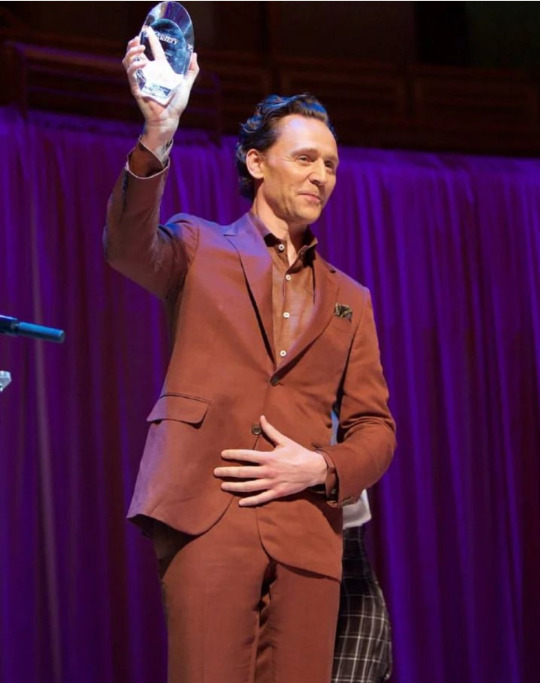#performing arts center
Explore tagged Tumblr posts
Text

Amant Performing Arts Center
Brooklyn NY
SO-IL
photo by Rafael Gamo
7 notes
·
View notes
Text

Proposal For Seoul’s Newest Performing Arts Center Is Made Up of Five Futuristic Buildings
Melike Altınışık Architects (MAA) is one of five firms that were shortlisted in the hopes of designing Seoul's 2nd Sejong Cultural Center for Performing Arts. The firm's proposal, which was made in collaboration with BAUM Architects and Aliveus Landscape, is called The Spark and consists of five buildings that form a unified hub.




#melike altinisik architects (maa)#seoul#south korea#architecture#future architecture#performing arts center#seoul's 2 sejong cultural center for performing arts#baum architects#aliveus landscape#the spark
1 note
·
View note
Text

Nature and Man
0 notes
Text

Performing Arts Center with reflection of Founder's Hall
#Performing Arts Center#Glass building#Reflecting glass#reflection#Soka University#Aliso Viejo#orange county#california#photo#digital#original photographers#overcast
0 notes
Text

Alexander Calder, Le Guichet, Lincoln Center for the Performing Arts, New York, New York, 1963
#art#design#sculpture#public art#Alexander Calder#Lincoln center for the performing arts#New York#New York City#Le Guichet
212 notes
·
View notes
Text

because nothing matters more than the performance
#THEY MAKE ME SO#(ribcage ruptures dramatically and i bleed out lying on the floor)#fratricide friday/sibling rane saturday double feature :)#anyway symbolism rambing time !#the mirror is in the center of the piece bc importance of the performance#and it is bright white bc of how holy faulkner is meant to be#and yet it's blank#because it isnt real#the scribbles in the background centre rane because behind the scenes they are the one in charge#and they also kinda look like wings#faulkner is on his broken stone throne to show that all his displays of power mean nothing#there is light emanating from the mirror but it isnt welcoming or warm#the crack goes through rane's eyes bc theyre blind to faulkner (i keep doing rane closed eye symbolism. no one noticessss)#and the crack also goes through ranes throat since they died of. well#the mirror is placed right where faulkner's head would be#but his hair shows that hes looking down#yea :)#didnt rly have a plan for this and it came out a lot better than i thought!#the silt verses#tsv#brother faulkner#sibling rane#ranefall#tsv fanart#art
71 notes
·
View notes
Text

Charlotte Moorman / Nam June Paik / Jud Yalkut, TV Cello Premiere, (16mm film (color, silent) transferred to video), 1970 [Walker Art Center, Minneapolis, MN. © Charlotte Moorman, Nam June Paik, Jud Yalkut]
#art#fluxus#film#performance#video#still#charlotte moorman#nam june paik#jud yalkut#walker art center#1970s
38 notes
·
View notes
Text

Oberon and Titania from "A Midsummer Night's Dream," Act IV, Scene I
Artist: Thomas Stothard (British, 1755–1834)
Date: 1806
Medium: Oil on paper mounted on board
Collection: Yale Center for British Art, New Haven, Connecticut, United States
A Midsummer's Night Dream
A Midsummer Night's Dream is a comedy play written by William Shakespeare in about 1595 or 1596. The play is set in Athens, and consists of several subplots that revolve around the marriage of Theseus and Hippolyta. One subplot involves a conflict among four Athenian lovers. Another follows a group of six amateur actors rehearsing the play which they are to perform before the wedding. Both groups find themselves in a forest inhabited by fairies who manipulate the humans and are engaged in their own domestic intrigue. A Midsummer Night's Dream is one of Shakespeare's most popular and widely performed plays.
Act IV, Scene I
Having achieved his goals, Oberon releases Titania and orders Puck to remove the donkey's head from Bottom. The fairies then disappear, and Theseus and Hippolyta arrive on the scene, during an early morning hunt. They find the lovers still sleeping in the glade. They wake up the lovers and, since Demetrius no longer loves Hermia, Theseus over-rules Egeus's demands and arranges a group wedding. The lovers at first believe they are still in a dream and cannot recall what has happened. The lovers decide that the night's events must have been a dream, as they walk back to Athens.
#a midsummer's night dream#literary theme#painting#oil painting#artwork#fine art#play by william shakespeare#costume#crown#dream#king#light#lovers#meeting#performance#queen#sleeping#theater#william shakespeare#titania#oberon#british culture#british painter#thomas stothard#british art#19th century painting#yale center for british art
22 notes
·
View notes
Text










Mark Twain Prize Award Ceremony, John F. Kennedy Center for the Performing Arts, Washington, D.C., 23 October 2011
#green day#green day live#billie joe armstrong#2011#uno dos tre era#Mark Twain Prize Award Ceremony#John F. Kennedy Center for the Performing Arts#dc#washington dc#23 october
30 notes
·
View notes
Text
#TomHiddleston dishes on the creation of the MCU #Loki #TheAvengers #Thor @variety #MiamiFilmFestival









#TomHiddleston was honored by @Variety with the Virtuoso Award during the Miami Film Festival on 9 April held at the Adrienne Arsht Center for the Performing Arts in Miami, Florida
#tom hiddleston#miami film festival#adrienne arsht center for the performing arts#tom hiddelston loki#marvel#hiddles army#hiddlesworth#hiddlestoners
78 notes
·
View notes
Text










The Lincoln Center for the Performing Arts opened in New York City on September 23, 1962.
#Lincoln Center for the Performing Arts#opened#travel#original photography#vacation#tourist attraction#landmark#architecture#cityscape#23 September 1962#US history#anniversary#Midtown Manhattan#New York City#David H. Koch Theater#10 Lincoln Center Plaza#Metropolitan Opera House#David Geffen Hall#Revson Fountain#Paul Milstein Pool and Terrace#Barclays Capital Grove#Damrosch Park#Hearst Plaza#summer 2013#exterior#USA
34 notes
·
View notes
Text
Ayo Edebiri and Lionel Boyce join the cast of the live reading of “Conclave” on February 10.


#lionel boyce#ayo edebiri#conclave#actors#film independent#Wallis Annenberg Center for the Performing Arts#the bear#the bear tv#the bear sydney#syd adamu#the bear marcus
12 notes
·
View notes
Text

Performing Arts Center
#Soka University#Performing Arts Center#Aliso Viejo#orange county#california#photo#digital#Roof#Sky#original photographers
1 note
·
View note
Text
Balanchine's Coppelia
In today's Times, Roslyn Sulcas has an article about the New York City Ballet's production of Coppelia, which celebrated its 50th anniversary this summer. It had its premiere at the Saratoga Performing Arts Center during the company's annual residency.
One thing that Sulcas fails to mention is that the role of Swanilda was originally supposed to have been shared by Patricia McBride and Gelsey Kirkland. But when Kirkland announced she was leaving the company, Balanchine gave all performances to McBride
‘Coppelia’ at 50: When City Ballet Took a Turn for ‘Fun and Funny’
Original cast members look back at George Balanchine and Alexandra Danilova’s staging of the 19th-century ballet. “Everyone knows when something is good,” one said.
By Roslyn Sulcas Sept. 23, 2024, 5:02 a.m. ET
George Balanchine’s decision to stage the 19th-century ballet “Coppelia,” in 1974, was a surprise. Although Balanchine, the co-founder and leader of New York City Ballet, occasionally created narrative ballets, like “The Nutcracker” and “A Midsummer Night’s Dream,” the company was identified with a lean, no-frills approach to classical dance. It was turned toward innovation and experimentation, rather than story, characters and elaborate costumes.
But the three-act “Coppelia,” with its lush, melodic Delibes score, fairy-tale set and extensive ensemble dances, was anything but experimental. City Ballet audiences were anticipating it “with a mixture of delight, incredulity and awe, and in some cases horror,” the critic Marcia B. Siegel wrote, shortly before the ballet’s July 17 premiere at the Saratoga Performing Arts Center in upstate New York. But Balanchine, who asked his Russian compatriot (and former romantic partner), the ballerina Alexandra Danilova, to assist him on staging the ballet, knew what he was doing. “Coppelia,” starring Patricia McBride as the heroine Swanilda, Helgi Tomasson as her swain Franz and Shaun O’Brien as the eccentric toymaker Doctor Coppelius, was a roaring success, and has been performed regularly ever since. This season’s performances—Sept. 27 to 29 and Oct. 5-6—are City Ballet’s 50th anniversary celebration of the ballet.

Above: Patricia McBride rehearsing Coppelia, 1974. Seated at left are Susan Hendl, who led the Waltz of the Golden Hours in Act 3 and Stephanie Saland, McBride's understudy, who also performed Swanilda. Standing, center: Lincoln Kirstein, Patricia McBride, George Balanchine. Leaning against the piano at right is Rosemary Dunleavy, the ballet mistress. Seated at right are Colleen Neary, who led the Discord & War divertissement in the third act, and Merrill Ashley, who danced the Dawn solo in the same act. Photo: Martha Swope via NYPL/NY Times
“Coppelia” was first choreographed by Arthur Saint-Léon for the Paris Opera Ballet in 1870, and then reworked by Marius Petipa in 1884 into the version we know today. The story is simple: Franz and Swanilda are happily affianced village sweethearts, until Franz falls for a pretty girl who turns out to be a life-size doll—the creation of Doctor Coppelius. By the end of the tale, which involves Swanilda impersonating the doll, Franz has learned a lesson about fantasy and Swanilda has secured her man. Cue wedding celebrations.
Balanchine asked Danilova, a famous Swanilda with a pitch-perfect memory of the Petipa version she had performed with the Ballets Russes de Monte Carlo, to set Acts I and II, although he added a few new dances. But Act III, omitted in many productions, is his alone, a series of divertissements that are a pure-dance coda to the story.
Megan Fairchild, who first performed Swanilda at 19, said she loved the character’s sassy personality. “It’s a more casual vibe,” she said. “She’s not a princess, and that resonates.”
“We do a lot of ballets that are sophisticated and intellectual, for highly developed dance watchers,” said Wendy Whelan, City Ballet’s associate artistic director. “This is lighthearted and warm and easy to watch. It’s a reminder of the beginnings of ballet: the storytelling, the classical dance, the pantomime.” Plus, Whelan added, “it’s fun and it’s funny.” In interviews, five original cast members talked about their memories of creating the ballet. Below are edited excerpts.

Above: Patricia McBride in Act I, 1975. Swanilda's friends in the background are Judith Fugate, unidentified, Delia Peters, and Debra Austin. Photo: Martha Swope via NYPL
Patricia McBride, Swanilda Madame Danilova’s memory was uncanny. She remembered every step for every character in the ballet, and she danced full out when she showed you the choreography. She wanted me to play it straight when I impersonated the doll, not for laughs, and she was very precise about the musicality and phrasing, and the intent of each step. We hadn’t done a lot of mime at City Ballet, but she was so clear, she made it easy to learn. I loved that beautiful Russian port de bras she had. You could see what a great Swanilda she had been.
Balanchine was very specific about the way I held my arms and body as the doll. He never spoke about characterization, or how he wanted it to look, but the musicality of the choreography was so natural and wonderful. He would show you the steps and it was done.
Madame Danilova and Balanchine would keep going all day long, moving from one scene to the next, talking together. It was like seeing history, the two of them in the room together. Mr. B never interfered with her staging. I think he really respected her knowledge and memory.
Sometimes I would feel quite choked up to think of their lives and history together. They were both in their 70s, but they had so much energy and vitality and love, and they had a lot of fun together. They were so young in spirit. I felt so fortunate to work with them, and to see their respect for each other and their love of dance.

Above: Helgi Tomasson in Act 3, Saratoga, 1974. Photo: Martha Swope via NYPL
Helgi Tomasson, Franz I was surprised and not surprised at Balanchine deciding to do “Coppelia.” He spoke about programming like creating a menu; he knew that he had to give the public varied dishes. And I think he loved those old Petipa pieces.
We were up in Saratoga when he started to choreograph my first-act variation. For some reason, he didn’t feel it was right. John Taras, the ballet master, was sitting next to him, and asked if I knew Balanchine’s “Sylvia” pas de deux, also to Delibes music. I had danced it with the Harkness Ballet, and Balanchine said, “Do you remember the variation? Let’s see it.” I did it, and he said, “Good, let’s keep that!”
For me, most of the dancing was in the third act. I loved the way Balanchine constructed the coda and how Patty and I came in and out of the group. He created speedy yet articulate steps that I think he felt suited me.
I remember that Patty and I did every performance of “Coppelia” in the first week, seven or eight in a row. At some point during that first week, I was so tired that in the scene where Franz is supposed to be asleep, I actually fell asleep. But the whole experience was a highlight of my career.

Above: Alexandra Danilova rehearsing Patricia McBride. Photo: Martha Swope via NYPL
Jean-Pierre Frohlich, Corps de Ballet I had been in the company two years and was just 19. I remember so well Balanchine and Danilova standing in front of the mirrors at the front of the studio. She was so elegant. I knew they had been an item in the Diaghilev era, and I was trying to see how those dynamics would have worked! You could see she still adored him.
Danilova loved to demonstrate steps. She wore ballet slippers with a little heel and ribbons. She had beautiful legs, and liked showing them off. She loved men; she was harder on the women than the men.
There was a very good ambience in the studio. They spoke in English, maybe occasionally in Russian, but I think they wanted the dancers to understand. She would never contradict him or say no to his suggestions. I felt she was very happy to be involved. But he was also very accommodating; he knew how much she had to offer.

Above: Gelsey Kirkland, originally scheduled to share the role of Swanilda with McBride, at rehearsal with ballet mistress Rosemary Dunleavy. Photo: Martha Swope via NYPL
Christine Redpath, Prayer Solo Madame Danilova was so charming. She would wear a gorgeous green sleeveless leotard, with a scoop neck and back, a belt and chiffon skirt, hiked up to show her fantastic legs, and her hair coifed with a little scarf tied behind her ears. You could see she still loved to dance, and it was very sweet to see she still loved Balanchine.
[In “Coppelia,” three allegorical female solos, Prayer, Dawn and Spinner, come near the start of Act III. ]
I learned my solo with Balanchine, but Madame Danilova was there because she had danced the Prayer solo in Russia. I think what he created on me was based on that. Balanchine never spoke about the meaning of the solo, but all the gestures are “up,” and the music seems spiritual to me. If you take what he has given you, it’s all there to tell you who you are and what this is.
At some point he showed me a picture of Marie Taglioni in a blue skirt and little top with puffed sleeves and a horseshoe crown with stars, and that’s what Karinska designed for my costume.
Danilova sent me a lovely card and flowers on the opening night. We were all very excited. Everyone knows when something is good.

Above: Merrill Ashley in the "Dawn" variation in Act 3. The costumes are the originals; they were replaced when the ballet was performed in New York the following year. Photo: Martha Swope via NYPL
Merrill Ashley, Dawn Solo The solo he made for me was fiendishly difficult, and it never became easier. There was fast footwork, lots of changes of direction and it ended in plié on pointe on one foot. I liked dancing it, but it scared me. There was one bit on a diagonal that was impossible, and it repeated three times. Eventually I said, I’m really struggling, would you consider changing it, and he said, “Dear, it’s yours, do what you want.”
Danilova choreographed the introduction to the solo, and that had more of a feeling of gentleness, awakening, offering something. Then the sun comes up over the horizon and, boom! Pyrotechnics!
You felt that Balanchine and Danilova were really friends and colleagues. He turned to her a lot; he really respected the knowledge and tradition she brought. I loved watching their interaction.

Above: Children from the School of American Ballet in Coppelia. The pink costumes replaced the golden ones used in Saratoga. Photo: Martha Swope via NYPL
Charlotte d’Amboise, Child Dancer David Richardson, a dancer in the company, was in charge of the kids, and to my twin sister and me he was God. We knew Balanchine was famous, but it was all about David. I was in the big dance in the last act, which I loved. We wore pink tutus and it was really dancey, and we had a whole section that was just us.
Balanchine really loved to have children involved and he could choreograph for them. He did it so easily, almost as if he didn’t think about it, just “go here, do this.” But he must have planned it.
At the first performance in Saratoga, one side of the elastic on my ballet slippers came off and was dangling while I was dancing. All I remember is thinking, David is seeing this—and he was so mad at me. I have never not paid attention to my shoes again!
I did pretty much all of the Balanchine ballets that had children in them, but “Coppelia” was my favorite. You felt like a ballerina, you had to have technique to dance it, and you felt like you were part of the corps de ballet. The best part of being a kid in these ballets was dancing next to these ballerinas and dancers who are goddesses and princes. To be surrounded by high art, to be part of it, affects you forever.
#Balanchine#Coppelia#Balanchine's Coppelia#Alexandra Danilova#Patricia McBride#Helgi Tomasson#Merrill Ashley#Christine Redpath#Jean-Pierre Frolich#Charlotte d'Amboise#Gelsey Kirkland#Saratoga Performing Arts Center#SPAC
10 notes
·
View notes
Text
Donald Trump Declares Himself Chairman of Washington’s Kennedy Center

In a surprising move, former U.S. President Donald Trump has announced himself as the new chairman of the John F. Kennedy Center for the Performing Arts in Washington, D.C. The high-profile cultural venue, traditionally associated with bipartisan leadership, now finds itself at the center of political debate following Trump’s self-proclaimed appointment.
A Bold Declaration
During a press conference at Mar-a-Lago, Trump asserted his leadership over the prestigious institution, emphasizing his commitment to “restoring American culture” and “bringing back real entertainment.” His announcement, however, did not come with official confirmation from the Kennedy Center’s board or federal authorities, raising questions about the legitimacy of the claim.
Political and Cultural Reactions
The declaration has sparked intense reactions across the political spectrum. Supporters view it as a move to challenge the "liberal dominance" of the arts, while critics argue it undermines the integrity of the Kennedy Center, which has historically remained nonpartisan. Artists and cultural figures have voiced concerns over potential changes to programming and funding under Trump’s influence.
Kennedy Center’s Official Response
As of now, the Kennedy Center has not issued an official statement confirming or denying Trump’s claims. The institution, established in 1971 as a national cultural landmark, typically appoints its leadership through an independent board, with oversight from the federal government. Legal experts suggest that unless there is formal approval, Trump’s self-appointment holds no official weight.
What Comes Next?
With no official backing yet, Trump's claim to the chairmanship remains uncertain. However, his announcement has already ignited discussions about the intersection of politics and the arts in America. Whether this move is symbolic or an actual attempt to reshape the Kennedy Center’s future remains to be seen.
#Donald Trump#Kennedy Center#Washington D.C.#U.S. Politics#Performing Arts#Cultural Institutions#Trump News#Political Controversy#Arts and Culture#Government Affairs
5 notes
·
View notes
Text
For your 2024 consideration:
Akane Banashi- ongoing, the female shonen jump lead we need and deserve, rakugo, girl power, all my homies hate Zensho Arakawa and you will also feel compelled to physically fight a cranky old fictional man.
Show-Ha Shoten!-ongoing, monthly, stand-up comedy, by one half of the death note duo (art by Takeshi Obata) and Akinari Asakura, would die for Broken Glass Slipper and currently rooting for them to singlehandedly destroy the patriarchy.
Mission: Yozakura Family-ongoing, on its last leg, has an anime premiering in spring and you have no excuse at this point to keep ignoring its existence. Has just over 20 volumes and is currently the fourth longest running manga in the weekly shonen jump line-up rn (don't quote me on that). Centers around a super-powered spy family and there is a character/sibling for everyone. Has a power creep that has yet to jump the shark like certain other series. MC is literally an unproblematic fav king.
Blooming Love (Hanninmae no Koibito)-ongoing, biweekly, romance/slice of life, a romance where you don't have to wait 50 something chapters for two lovesick idiots to confess. Romantic progress is made pretty steadily. Last year of high school + beyond. The main couple is super adorbs. Serialized in Shonen Jump + and can be read on mangaplus.
And as usual,
read One Piece!
#manga#manga recommendation#manga recs#there's plenty of other series i'd recommend too#but i wish to spread the word on these specifically#two of these center around performance arts btw#akane banashi#show ha shoten!#mission yozakura family#blooming love#hanninmae no koibito
42 notes
·
View notes